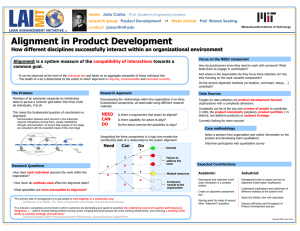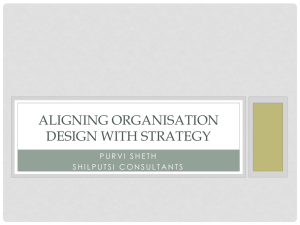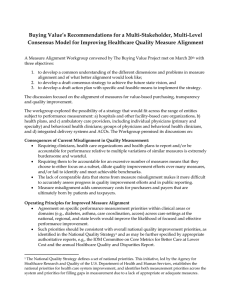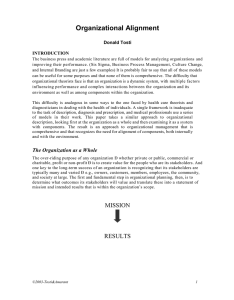Research Abstract
advertisement
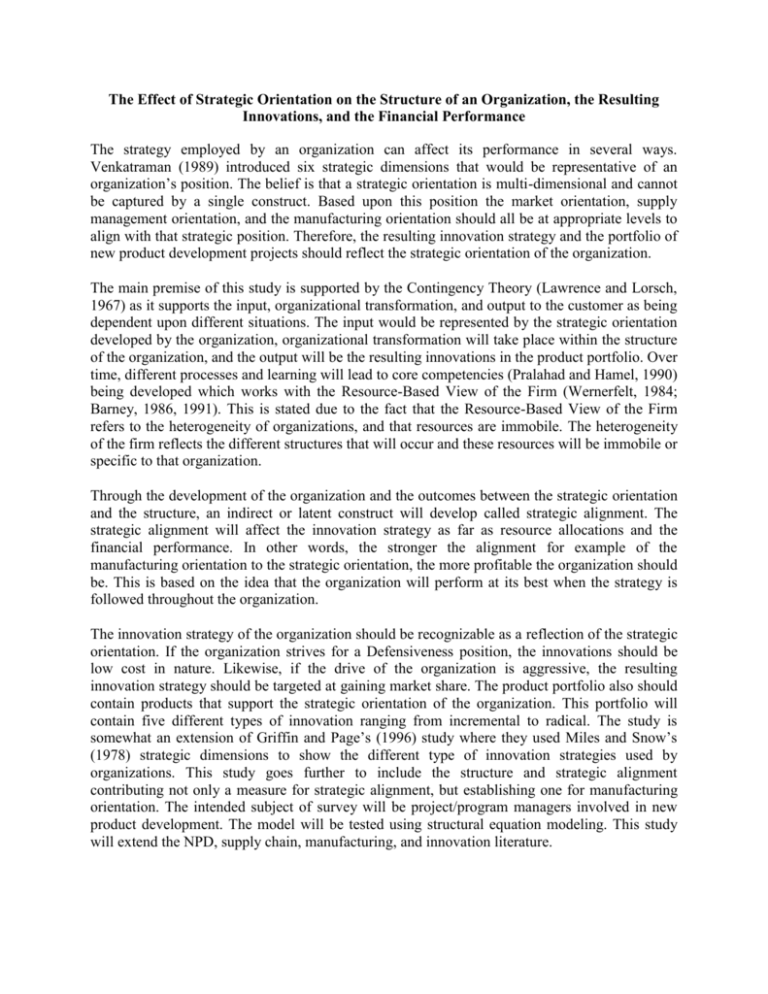
The Effect of Strategic Orientation on the Structure of an Organization, the Resulting Innovations, and the Financial Performance The strategy employed by an organization can affect its performance in several ways. Venkatraman (1989) introduced six strategic dimensions that would be representative of an organization’s position. The belief is that a strategic orientation is multi-dimensional and cannot be captured by a single construct. Based upon this position the market orientation, supply management orientation, and the manufacturing orientation should all be at appropriate levels to align with that strategic position. Therefore, the resulting innovation strategy and the portfolio of new product development projects should reflect the strategic orientation of the organization. The main premise of this study is supported by the Contingency Theory (Lawrence and Lorsch, 1967) as it supports the input, organizational transformation, and output to the customer as being dependent upon different situations. The input would be represented by the strategic orientation developed by the organization, organizational transformation will take place within the structure of the organization, and the output will be the resulting innovations in the product portfolio. Over time, different processes and learning will lead to core competencies (Pralahad and Hamel, 1990) being developed which works with the Resource-Based View of the Firm (Wernerfelt, 1984; Barney, 1986, 1991). This is stated due to the fact that the Resource-Based View of the Firm refers to the heterogeneity of organizations, and that resources are immobile. The heterogeneity of the firm reflects the different structures that will occur and these resources will be immobile or specific to that organization. Through the development of the organization and the outcomes between the strategic orientation and the structure, an indirect or latent construct will develop called strategic alignment. The strategic alignment will affect the innovation strategy as far as resource allocations and the financial performance. In other words, the stronger the alignment for example of the manufacturing orientation to the strategic orientation, the more profitable the organization should be. This is based on the idea that the organization will perform at its best when the strategy is followed throughout the organization. The innovation strategy of the organization should be recognizable as a reflection of the strategic orientation. If the organization strives for a Defensiveness position, the innovations should be low cost in nature. Likewise, if the drive of the organization is aggressive, the resulting innovation strategy should be targeted at gaining market share. The product portfolio also should contain products that support the strategic orientation of the organization. This portfolio will contain five different types of innovation ranging from incremental to radical. The study is somewhat an extension of Griffin and Page’s (1996) study where they used Miles and Snow’s (1978) strategic dimensions to show the different type of innovation strategies used by organizations. This study goes further to include the structure and strategic alignment contributing not only a measure for strategic alignment, but establishing one for manufacturing orientation. The intended subject of survey will be project/program managers involved in new product development. The model will be tested using structural equation modeling. This study will extend the NPD, supply chain, manufacturing, and innovation literature.





![IS 788 [Process] Change Management](http://s2.studylib.net/store/data/009898338_1-678e0fadd3ae3f5ae562e6044e3e3804-300x300.png)
